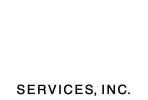
Ella Fishman T: 310.201.0010 F: 310.201.0016 ella@adrservices.com ADR Services
Suite 200
1900 Avenue of the Stars
Los Angeles, CA 90067-4303 |
 Mediation Tips - Presentation
Arrive EarlyTop 5 advantages to arriving early at your mediation:
Avoid a Bad StartRefrain from writing invective-laced mediation briefs that attack the other party and/or their counsel. This tactic only produces ill will and lowers people’s willingness to discuss settlement. Worse yet, the mediator consumes valuable time attempting to repair the damage and getting the players to behave civilly Blow up an exhibitWe are a visual world. When you blow up an exhibit for mediation it has impact on the mediator and the other side. It says you are prepared and are doing a first class job on your case. Joint Sessions - The Good, the Bad and the PlanMediating “by the book” requires that we start each mediation with a joint session. This may not always be the best idea. Below we look at the good, the bad and the planning of joint sessions. The Good: The parties and counsel can meet and greet. There is the opportunity to present and explore the facts, legal issues and damage calculations, getting everyone on the same page for a productive mediation. The Bad: Valuable time is consumed going over issues outlined in the briefs and well known to the parties and counsel. Listening to lawyers’ opening statements sometimes hardens people in their positions and may unnecessarily hurt feelings. Many think joint sessions in a well developed litigated matter are a waste of time. The Plan: At the mediation’s start each side caucuses separately with the mediator to determine if a joint session is necessary and/or will be helpful. If there is agreement that a joint session will advance the mediation, then the parties, counsel and the mediator can determine the goals for the joint session, set the agenda and budget an appropriate amount of time.
In Mediation Joint Session, Address the Other Side
During the joint session of a mediation, address your remarks to the other side’s decision maker and counsel, not to the mediator. In order to achieve the result you want, the other side must be persuaded that there is risk in continuing to litigate and that settlement is the better alternative. A professional, straight forward, and appropriately passionate presentation directed to the other side’s decision maker effectively communicates your position with impact that lasts through the mediation.
What About Lunch?
Mediations stall when clients and counsel recess for long lunch breaks. Usually by Consider the following tips for effective PowerPoint presentations at mediation joint sessions.
Joint Sessions RevisitedJoint sessions often move the mediation process backwards. For an effective joint session, work with the mediator to answer the following questions.
Employment Mediation TemplateEmployment litigation was the number one case type filed in Los Angeles Superior Court in 2016. Almost all employment matters are mediated. Because of their factual complexity, intense emotions, layered negotiations and insurance overlay, time must be used efficiently. With these factors in mind, below is a suggested employment mediation template.
Copyright ©
, Ralph O Williams III |
